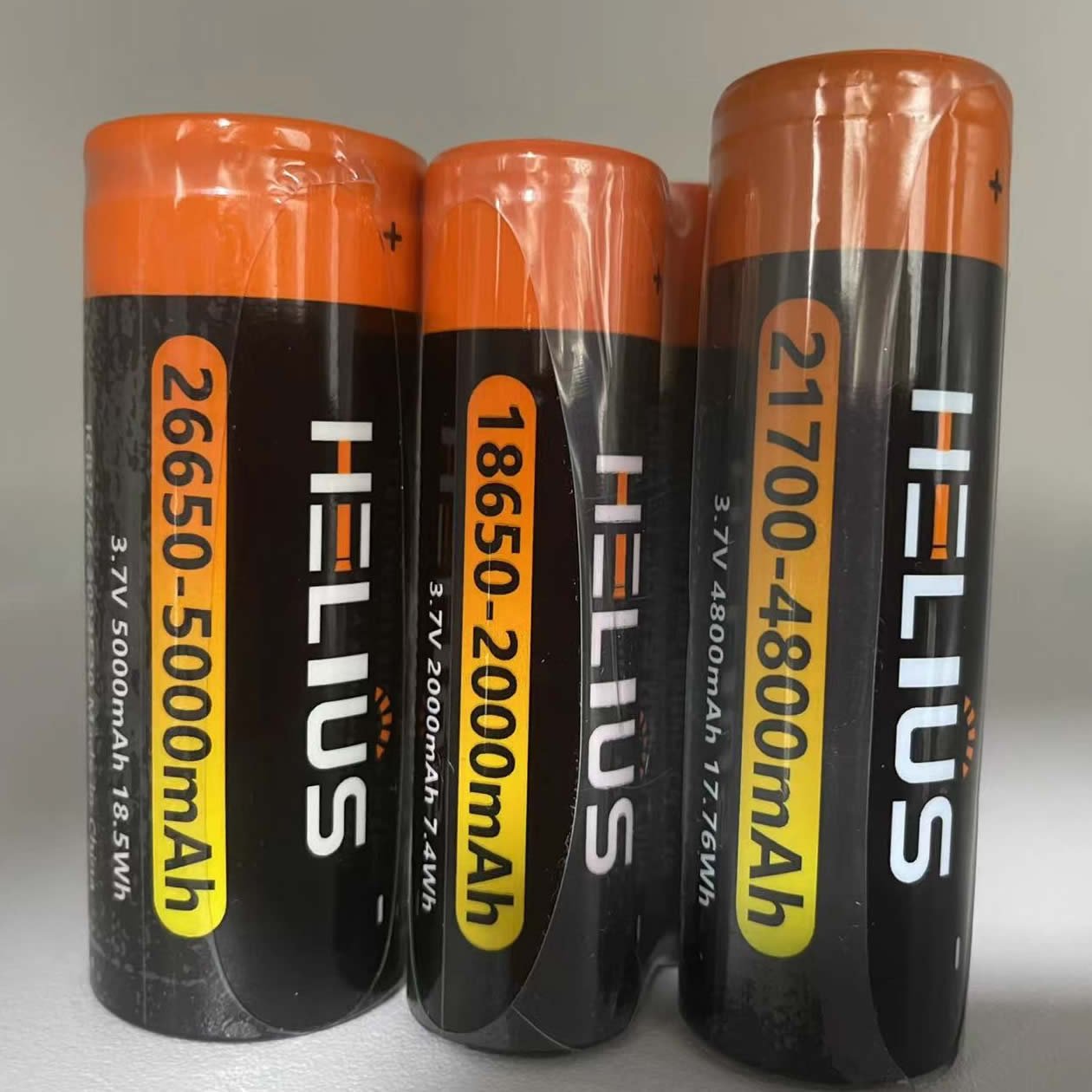© Copyright 2023 Heliusworld - All Rights Reserved
Flashlight Batteries 101
Flashlight batteries are the life force behind your portable light source, providing the necessary power to illuminate your surroundings. Understanding the importance of flashlight batteries is crucial for ensuring optimal performance and longevity of your torch. Whether you're an outdoor adventurer, DIY enthusiast, or simply rely on flashlights for emergencies, having reliable and efficient battery power is essential.
Flashlight batteries, also known as torch batteries, come in various types and sizes to suit different flashlight models. They provide the electrical energy needed to produce light through a chemical reaction within the battery cells. Without a properly functioning battery, your flashlight would be rendered useless in times of need.
Choosing the right flashlight battery can significantly impact its performance and reliability. Factors such as battery type, capacity, voltage, and compatibility with your flashlight's requirements should be considered when making a selection. By understanding the importance of flashlight batteries and selecting the right one for your needs, you can ensure that your portable light source is always ready to shine bright.
Exploring Different Battery Types
When it comes to flashlight batteries, there are various types available, each with its own set of characteristics and advantages. Understanding the different battery types can help you make an informed decision when selecting the right power source for your flashlight.
Primary Battery Types
Alkaline Batteries
Alkaline batteries are one of the most common and widely used types of batteries. They are affordable, readily available, and offer a reliable power source for flashlights. Alkaline batteries have a long shelf life and provide consistent performance throughout their usage. They are suitable for both low-drain and high-drain devices, making them versatile options for flashlights of all kinds.
Lithium Batteries
Lithium batteries are known for their exceptional performance and energy density. They offer a higher voltage output compared to alkaline batteries, resulting in brighter light output from your flashlight. Lithium batteries also have a longer shelf life and perform well in extreme temperatures, making them ideal for outdoor enthusiasts or those who require reliable power in challenging conditions.
Rechargeable Battery Types
Nickel-Metal Hydride (NiMH) Batteries
NiMH batteries are rechargeable alternatives to disposable primary batteries. They offer a higher capacity than alkaline batteries, providing longer runtimes between charges. NiMH batteries are environmentally friendly as they can be recharged multiple times before disposal. However, they may self-discharge over time if not used regularly.
Lithium-Ion (Li-ion) Batteries
Li-ion batteries have gained popularity due to their high energy density and lightweight design. They offer excellent performance and can be recharged numerous times without experiencing memory effect or significant capacity loss. Li-ion batteries provide consistent power output throughout their usage and are commonly used in high-performance flashlights.
By exploring the different battery types available, you can choose the one that best suits your needs based on factors such as cost, performance requirements, environmental impact, and overall convenience.
Unveiling Battery Currents and Life Factors
Understanding how battery currents work and the factors that affect battery life is essential for maximizing the performance and longevity of your flashlight batteries.
Understanding Battery Currents
Direct Current (DC)
Flashlight batteries produce direct current (DC), which is a constant flow of electricity in one direction. DC is the preferred type of current for flashlight batteries because it provides a stable power supply, ensuring consistent light output. Flashlight circuits are designed to work with DC, making it compatible with most flashlight models.
Alternating Current (AC)
In contrast to DC, alternating current (AC) periodically changes direction. AC is commonly used in household electrical systems but is incompatible with flashlight batteries. Attempting to use AC power with a flashlight can damage the battery or even pose safety risks. It's important to ensure that your flashlight operates on DC power only.
Factors Affecting Battery Life
Temperature's Impact on Battery Performance
Extreme temperatures can significantly impact battery performance and lifespan. High temperatures accelerate chemical reactions within the battery, causing it to discharge more quickly. On the other hand, cold temperatures can reduce a battery's capacity temporarily. To maximize battery life, store your flashlights and spare batteries in a cool, dry place away from direct sunlight or extreme cold.
Drainage Rate and Its Effect on Battery Lifespan
The drainage rate refers to how quickly a battery discharges its stored energy when connected to a load, such as a flashlight. Higher drain devices require batteries capable of delivering power at a faster rate. Using batteries with insufficient drainage capabilities may result in reduced runtime or diminished performance. It's crucial to match the drain requirements of your flashlight with the appropriate battery type to optimize both performance and longevity.
By understanding battery currents and considering factors that affect battery life, you can make informed decisions about selecting suitable batteries for your flashlights and implement practices that extend their duration of use.
Selecting the Perfect Battery and Enhancing Performance
Choosing the right battery for your flashlight is crucial for ensuring optimal performance, efficiency, and longevity. Here are some considerations to keep in mind when selecting a flashlight battery:
Choosing the Right Battery
Considerations for Flashlight Battery Selection
Battery Type: Evaluate the specific needs of your flashlight and choose a battery type that aligns with those requirements. Consider factors such as voltage, capacity, and compatibility.
Capacity: Determine how long you need your flashlight to run continuously. Higher-capacity batteries provide longer runtime but may be bulkier or more expensive.
Voltage: Ensure that the battery's voltage matches your flashlight's requirements to avoid damage or poor performance.
Shelf Life: If you require batteries for emergency use or infrequent flashlight usage, consider batteries with a longer shelf life to ensure they remain functional when needed.
Matching Battery Specifications with Flashlight Requirements
Refer to your flashlight's user manual or manufacturer specifications to identify the recommended battery type and specifications. Matching these requirements will optimize both performance and longevity.
Tips for Maximizing Battery Performance
Proper Battery Installation and Contact Maintenance
Ensure that batteries are inserted correctly into your flashlight according to the manufacturer's instructions. Loose connections can lead to poor performance or intermittent operation. Regularly clean the contacts between the battery and flashlight using a soft cloth or cotton swab to remove any dirt or corrosion.
Optimizing Battery Usage for Extended Runtime
To maximize battery life during usage:
Use lower brightness settings when adequate light is available.
Avoid leaving your flashlight on unnecessarily.
Remove batteries from flashlights if they won't be used for an extended period.
Store spare batteries separately from flashlights to prevent accidental discharge.
By choosing the right battery and implementing best practices for maximizing performance, you can enhance the effectiveness of your flashlight while prolonging its overall lifespan.
Best Practices for Storage and Responsible Disposal
Proper storage and responsible disposal of flashlight batteries are essential for maintaining their performance, preserving their lifespan, and minimizing environmental impact.
Storing Flashlight Batteries
Ideal Storage Conditions for Maximum Battery Lifespan
To ensure the longevity of your flashlight batteries, follow these storage guidelines:
Store batteries in a cool, dry place away from direct sunlight or extreme temperatures.
Avoid storing batteries in humid environments as moisture can damage the battery cells.
Keep batteries in their original packaging or use a battery case to prevent contact with metal objects that could cause short circuits.
Do not store loose batteries together, as they may discharge or leak if they come into contact with each other.
Preventing Battery Leakage and Damage
To prevent battery leakage and damage:
Check the expiration dates on your batteries and dispose of expired ones promptly.
Avoid mixing different battery types or using old and new batteries together in the same device.
If you notice any signs of leakage (such as corrosion or fluid buildup), handle the battery with care using gloves and dispose of it properly.
Responsible Battery Disposal
Environmental Impact of Improper Battery Disposal
Improper disposal of batteries can have harmful effects on the environment. Batteries contain toxic chemicals such as mercury, lead, cadmium, and lithium that can contaminate soil and water sources if not disposed of correctly. It is crucial to prevent these hazardous substances from entering landfills.
Safe and Eco-Friendly Methods for Battery Disposal
Follow these guidelines for responsible battery disposal:
Research local recycling programs or collection centers that accept household batteries for proper recycling.
Use dedicated recycling bins specifically designed for battery disposal when available.
If no recycling options are accessible, consider contacting local waste management authorities for guidance on safe disposal methods.
Never incinerate or dispose of batteries in regular trash bins.
By adopting best practices for storing flashlight batteries and responsibly disposing of them at the end of their life cycle, you contribute to both personal safety and environmental preservation.
Powering Your Flashlight with the Right Battery
Choosing the perfect battery for your flashlight is crucial for effectively powering and energizing your portable light source. By selecting the right flashlight battery, you can ensure optimal performance, longevity, and reliability.
Implementing best practices for battery performance and longevity will further enhance your flashlight's capabilities. Proper storage, responsible disposal, and following manufacturer guidelines for usage and maintenance are essential steps to maximize the lifespan of your batteries.
Remember to consider factors such as battery type, capacity, voltage, and compatibility with your flashlight's requirements when choosing the ideal power source. By powering your flashlight with the right battery and implementing best practices, you can confidently rely on your portable light to illuminate any situation.
See Also
A Comprehensive Guide to Selecting the Perfect Mini Flashlight
Mastering Flashlight Maintenance: The Ultimate Cleaning Guide
A Comprehensive Guide to Selecting the Perfect Home Flashlight
Discover the Power of Cyansky P50R: An Exceptionally Bright Flashlight
A Homeowner's Guide: Optimal Light Colors for Repelling Bugs

